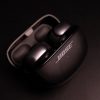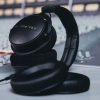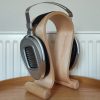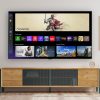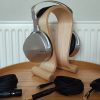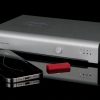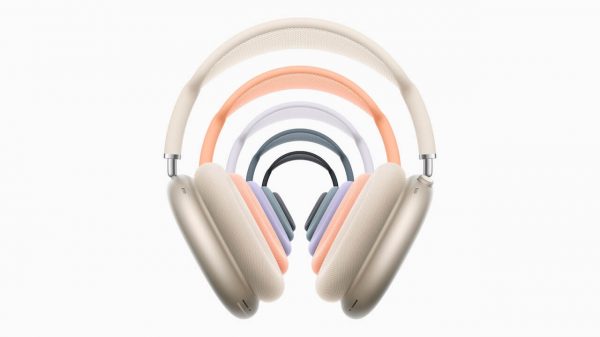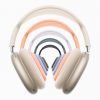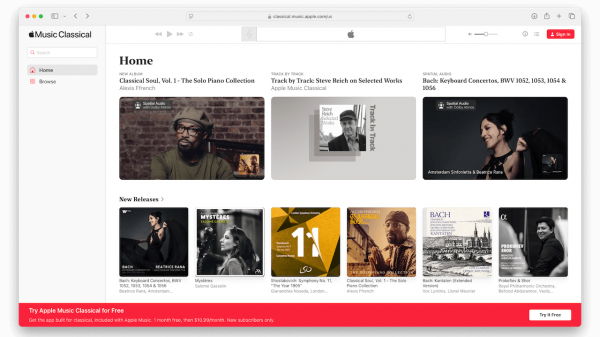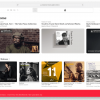I’ve been following our “Lossless Without You” series of articles and podcasts and have a different take on both the reasons for the shift, and the outcome we are likely to see. Apple Music and Amazon Music HD are in a better spot than either of the audiophile streaming platforms and we’re likely to see some major announcements at Apple WWDC 2021 that will alter the landscape.
My first thought is that the hype about Apple and Amazon moving to lossless “to combat Tidal” is probably not the real reason for the move. Here we have Apple and Amazon; two of the top 5 companies on the Fortune 500 and we are supposed to believe they are concerned about Tidal who even with Square’s backing clocks in at number 323? Also, both Apple and Amazon have known about Tidal and Qobuz for years. Spotify is the top dog in streaming and what could have triggered this decision to offer lossless and hi-res lossless at this specific moment?
My bet is this move had more to do with MQA than it did with Tidal. Apple and Amazon have both repeatedly fielded questions about when or if they intended to support MQA as part of their music streaming platforms.
Neither has expressed an interest in making the move but both have also been hesitant to rule it out entirely. I can’t imagine either one of these giants letting anyone dictate terms of business to them, so you know they were both looking for an out.
No way was either Apple or Amazon going to pay an ongoing licensing fee and convert their entire catalog if they could find a way to avoid doing so.
With the recent revelations about MQA being “lossy,” Apple found their way out. Provide lossless files and they could silence the MQA crowd.
“No, we are not going to adopt MQA because we have something better — ALAC Lossless.”
This is speculation on our part, but Apple clearly plans on doubling down on ALAC Lossless and is possibly going to announce a new Bluetooth codec that can support wireless lossless streaming at 16-bit/44.1kHz or higher – so why would they need or care about MQA?
Amazon quickly followed suit announcing they would be moving to FLAC and while the focus was on “keeping up with Apple,” it is entirely possible they would have made the move even if Apple hadn’t.
Amazon Prime has 200 million paying subscribers; almost 147 million in the United States alone. Having just spent $8.54 billion on MGM Studios, does anyone think Amazon has a cash flow issue or needs to worry about Tidal, Qobuz, or MQA? Amazon is building up one of the largest content libraries in the world right now and they have the money to compete with anyone.
Apple and Amazon are both effectively cutting MQA out of the equation; something that has to hurt its long-term viability.
But what about on the hardware side? Where does this leave companies that offer DAPs (digital audio players) for the personal audio category?
Even with both ALAC (Apple Lossless Audio Codec) and FLAC (Free Lossless Audio Codec) being supported by pretty much every DAC on the market, this doesn’t mean it is all smooth sailing for Apple and Amazon. The first hurdle is that while the standards are universal, the applications are not, and it will take time for their applications to find their way onto DAPs.
Most non-Android DAPs that support streaming offer Tidal, Qobuz, and maybe Deezer; products like the Cayin N3pro, Shanling M5s, Hiby R3, and the Hidizs models. My bet is that almost none of these will support Apple or Amazon’s new offerings.
For older devices, manufacturers won’t update the code as it isn’t cost effective, and they can use the “It’s no longer supported” excuse. For newer devices, manufacturers may still find adding apps for these services isn’t economically feasible. They were never part of the original designs and it might not be something that they can afford.
How Astell & Kern and Sony react to these new lossless streaming tiers from the 3 biggest digital music streaming platforms will be very interesting to watch.
Sony is in the unique position of also owning a very large music catalog and may have a vested interest in creating an app for their own catalog rather than officially supporting either of their competitor’s offerings.
At the end of the day – you may need to buy a brand new DAP to have access to Apple Music (lossless), Amazon Music HD, and Spotify HiFi. How many people are likely to do that when they can access the apps on their smart phone or tablet?
Even for Android-based DAPs, many don’t support all of the streaming apps and will require both time and testing before these new services can be used. While I have no doubt, some will ready their product line as quickly as possible, other makers may be slower to react leaving users in the position of either waiting for updates or replacing their hardware.
The place where I see the most opportunity for Apple and Amazon to really gain market share quickly is to build a good offline player. This is the biggest vulnerability for Tidal and Qobuz and a place where Apple and Amazon can catch up and pass the existing offerings as they have entire divisions dedicated to programming apps for their devices and have similar experience in other markets (Prime Video).
If one vendor can succeed at creating an offline experience that works well for both content protection and ease of use, that’s a game changer and will cause a shift away from Tidal/Qobuz but again, new functionality may require hardware updates to be usable and increase end user costs.






